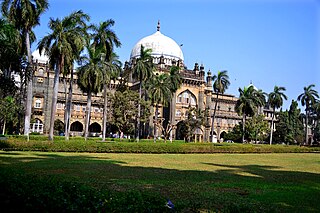
Chhatrapati Shivaji Maharaj Vastu Sangrahalaya, (CSMVS) formerly named the Prince of Wales Museum of Western India, is a museum in Mumbai (Bombay) which documents the history of India from prehistoric to modern times.

Atul Dodiya is an Indian artist.

Sayed Haider Raza was an Indian painter who lived and worked in France for most of his career. Born on 22 February 1922 in Kakkaiya, Central Provinces, British India, Raza moved to France in 1950, marrying the French artist Janine Mongillat in 1959. Following her death from cancer in 2002, Raza returned to India in 2010, where he would live until his death on 28 July 2016.

Ranjit Hoskote is an Indian poet, art critic, cultural theorist and independent curator. He has been honoured by the Sahitya Akademi, India's National Academy of Letters, with the Sahitya Akademi Golden Jubilee Award and the Sahitya Akademi Prize for Translation. In 2022, Hoskote received the 7th JLF-Mahakavi Kanhaiyalal Sethia Award for Poetry.
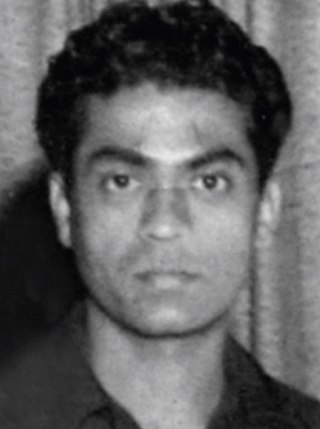
Vasudeo S. Gaitonde, also known as V. S. Gaitonde, was an Indian painter. He was regarded as one of India's foremost abstract painters. Gaitonde received the Padma Shri by the Government of India in 1971.

The Progressive Artists' Group (PAG), was a group of modern artists, mainly based in Bombay, from its formation in 1947. Though it lacked any particular style, there might be said to have been a move towards a synthesis of influences from Indian art history together with styles prevalent in Europe and North America during the first half of the 20th century, including Post-Impressionism, Cubism and Expressionism.
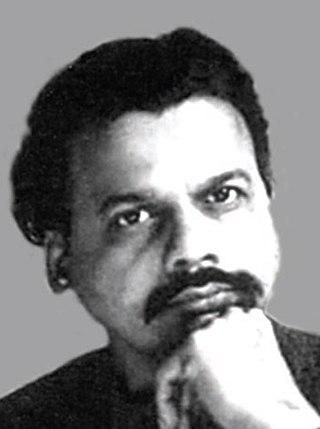
Mohan Samant was an early Indian modernist painter and member of the Progressive Artists Group. He was also a lifelong player of the sarangi, an Indian bowed string instrument.

Akbar Padamsee was an Indian artist and painter, considered one of the pioneers in modern Indian painting along with S.H. Raza, F.N. Souza and M.F. Husain. Over the years he also worked with various mediums from oil painting, plastic emulsion, water colour, sculpture, printmaking, to computer graphics, and photography. In addition, he worked as a film maker, sculptor, photographer, engraver, and lithographer. Today his paintings are among the most valued by modern Indian artists. His painting Reclining Nude was sold for US$1,426,500 at Sotheby's in New York on 25 March 2011.

Lalita Lajmi was an Indian painter. She was a self-taught artist born into a family involved in the arts, and was very fond of classical dance even as a child. She was the sister of Hindi film director, producer, and actor Guru Dutt. In 1994, she was invited to the Guru Dutt Film Festival, organised by Gopalkrishna Gandhi, the Indian High Commissioner at Nehru Centre, London. Her work was also influenced by Indian films such as those made by her brother, Satyajit Ray and Raj Kapoor.
Kalal Laxma Goud is an Indian painter, printmaker and draughtsman. He works in variety of mediums including etching, gouache, pastel, sculpture, and glass painting. He is best known for his early drawings that depict eroticism in a rural context, and also for the originality and quality of his etchings and aquatints.
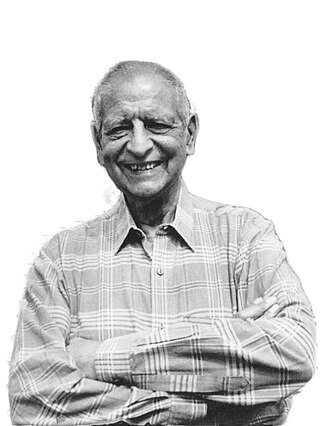
Kekoo Gandhy was an Indian art gallerist, art collector and art connoisseur, who pioneered the promotion of Indian modern art from the 1940s. He established Chemould Frames, a frame manufacturing business in 1941, soon he started displaying works of young modern artists K. H. Ara, S. H. Raza, K. K. Hebbar and M. F. Husain in his showroom windows. This led to gradual rise of modern art movement and post-colonial art in India. Eventually Gallery Chemould, India's first commercial art gallery, was opened in 1963 on the first floor of the Jehangir Art Gallery.
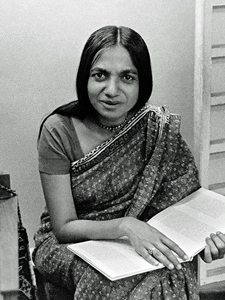
Nasreen Mohamedi (1937—1990) was an Indian artist best known for her line-based drawings, and is today considered one of the most essential modern artists from India. Despite being relatively unknown outside of her native country during her lifetime, Mohamedi's work has been the subject of remarkable revitalisation in international critical circles and has received popular acclaim over the last decade. Her work has been exhibited at the Museum of Modern Art (MoMA) in New York, the Kiran Nadar Museum of Art in New Delhi, documenta in Kassel, Germany, and at Talwar Gallery, which organised the first solo exhibition of her work outside of India in 2003, Today, Mohamedi is considered one of the major figures of the art of the twentieth century.
Chemould Prescott Road, founded, is the first contemporary art gallery in Mumbai, India.
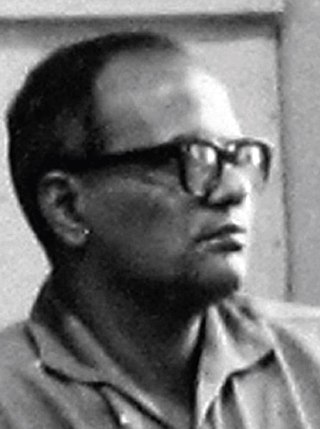
D. G. "Dattatray Gundo" Kulkarni (1921–1992), known as Dizi, was an Indian painter, cartoonist and sculptor.

Nalini Malani is an Indian artist, among the country's first generation of video artists.
Adil Jehangir Jussawalla is an Indian poet, magazine editor and translator. He has written two books of poetry, Land's End and Missing Person.

Arpana Caur is an Indian contemporary painter and graphic artist. Arpana Caur exhibits dynamism and deep insight in her depictions of women's conditions in modern India. A self-taught artist, Caur's portrayals of women in urban environments reflect her concerns with the issues of our time: life and death, violence, the environment, and women's issues. Clothing is a recurring theme in her work, both reinforcing and undermining the established image of women.

Anju Dodiya is an Indian contemporary painter. She lives and works in Mumbai. Her paintings feature autobiographical and human relationships, with 'women' usually at the center.
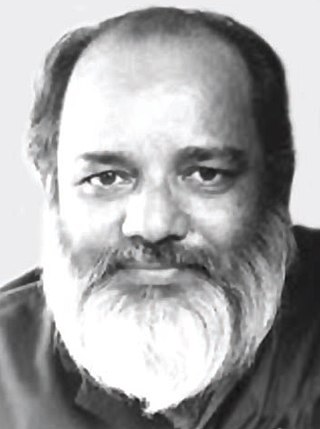
Baburao Sadwelkar was an Indian painter, art writer, educator and administrator. He is known for his portraits, landscape and abstract paintings in the Impressionistic style. As an art educator, he brought a modern outlook to art education at the Sir J. J. School of Art after learning about the American art education model under a Fulbright Scholarship in 1962–63. Sadwelkar was also passionate about the art tradition of Maharashtra and the art history of the Sir J. J. School of Art. From 1975 to 1986, he served as the Director of Art for Maharashtra State where the preservation and propagation of this artistic tradition prospered under his guidance. He wrote extensively about the art and artists from the state and which are considered as important art publications.

Shiavax Dhanjibhoy Chavda was an Indian painter, illustrator and muralist. Known for his dynamic line drawings and paintings, Chavda's work mainly showcased the dancers and musicians from India and Southeast Asia.



















